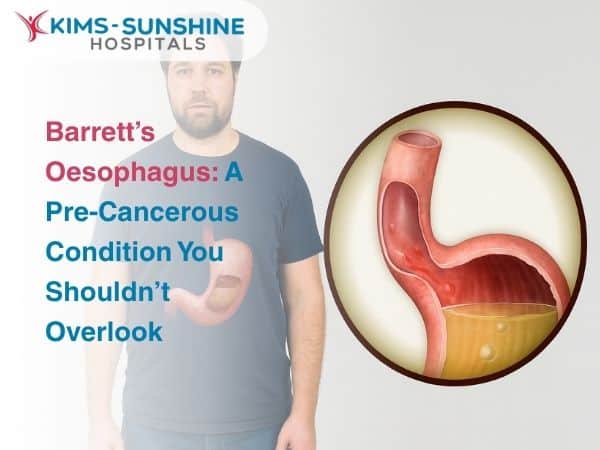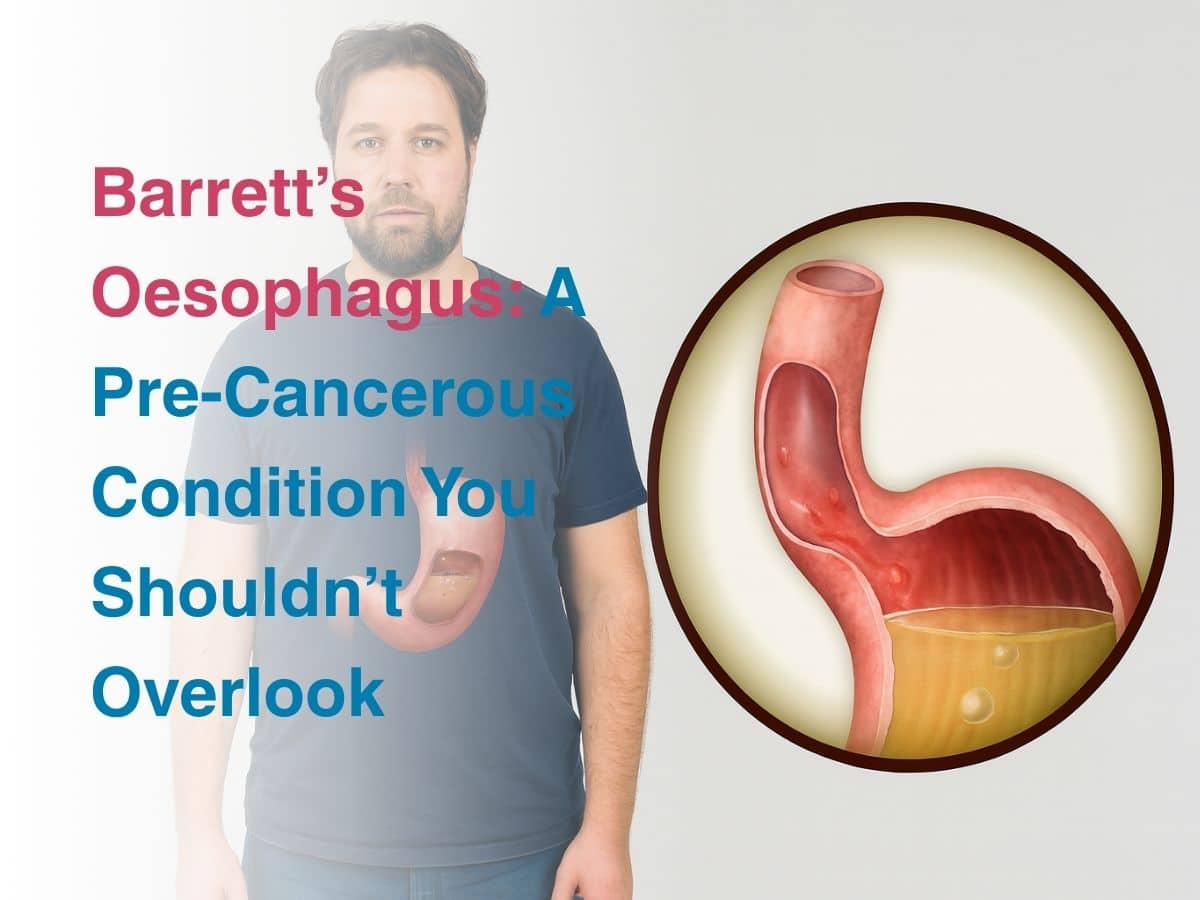
Barrett’s Oesophagus: A Pre-Cancerous Condition You Shouldn’t Overlook
 Barrett’s oesophagus is a specific condition of the oesophagus- the food pipe that carries food down your throat to the stomach, from your mouth. The lining of the tube-like food pipe is made of cells which look and work in a particular way, when everything is normal. However, when these cells begin to function differently and begin to look different too, doctors suspect Barrett’s oesophagus- as this may be a prelude to cancer of the oesophagus. It is a common issue with people who suffer from GERD or related conditions and incidence is pretty high in the Indian subcontinent, at present.
Barrett’s oesophagus is a specific condition of the oesophagus- the food pipe that carries food down your throat to the stomach, from your mouth. The lining of the tube-like food pipe is made of cells which look and work in a particular way, when everything is normal. However, when these cells begin to function differently and begin to look different too, doctors suspect Barrett’s oesophagus- as this may be a prelude to cancer of the oesophagus. It is a common issue with people who suffer from GERD or related conditions and incidence is pretty high in the Indian subcontinent, at present.
What Is Barrett’s Oesophagus?
Barrett’s oesophagus is a precancerous condition of the oesophagus – where the cells lining the food pipe change structurally and functionally. The cells normally secrete mucous to help food go down easier and to protect it from gastric acids (which may come up due to reflux), but when reflux or GERD is constant and cells are always being forced to stay in the wound healing stage, they may change functionally for the worse and look and begin to work like cells of the small intestine. This is why this condition is called intestinal metaplasia – where intestinal cells are present in a place where they should NOT be found at all.
Causes Of Barrett’s Oesophagus-
Doctors don’t exactly know why this condition occurs, but if someone has GERD for over a decade, or constant acid reflux and related conditions chronically, then cells in the food pipe may begin to behave differently, in order to protect themselves from the constant onslaught of gastric juices or other agents. The cells of the oesophagus begin to look and function more like intestinal cells, as those cells have greater protection against corrosive substances, than normal food pipe mucosal cells alone. This condition is more prevalent in older men than women, if they have GERD or smoke often.
Symptoms Of Barrett’s Oesophagus-
There are normally no subtle signs or symptoms that signal that you may have Barrett’s oesophagus. But, you may feel that your food pipe is constantly inflamed, you may have a sore throat often or may not be able to swallow food or water with ease. You may have chronic acid reflux, heartburn and associated chest pain too, at times.
Diagnosis Of Barrett’s Oesophagus (Endoscopy, Biopsy)-
An experienced gastroenterologist will do tests to look at your food pipe- with an endoscopy- where a camera is inserted into a long thin tube that is threaded down your throat and into your oesophagus and upper GI tract. Pictures are taken for analysis. A biopsy may also be taken, so that accurate diagnosis can be done. If your doctor notices salmon pink coloured, rectangular columns of cells which are coarse texture, instead of light pink cuboidal or square shaped epithelial cells which are smooth, then you will be diagnosed with Barrett’s oesophagus.
After doing so, they will classify their findings as short segment (3 cm of the food pipe or less) or long segment Barrett’s oesophagus (more than 3 cm of food pipe in length). They will also tell you if your level of cancer risk is none, low, high grade or if it has already progressed to cancer (carcinoma).
Treatment Options For Barrett’s Oesophagus-
If GERD or acid reflux is what is causing Barrett’s esophagus, then treating that may help you get better in the long run. Proton pump inhibitors can be taken as medication, to help ease symptoms. You will also need to get screened every few years and this depends on how much structural change was observed, in the food pipe mucosal lining cells. If there is no dysplasia, then you are at low risk, but if dysplasia was observed, it needs to be monitored annually thereafter. Ablation therapy, endoscopic mucosal resection or surgery is recommended when medications no longer work.
Conclusion
Barrett’s oesophagus is a condition which can return, if the same set of triggering conditions come back, even if you have had the affected parts of the food pipe surgically removed. But, this change is extremely rare and making sustainable lifestyle changes can help reduce your acid reflux related issues in the long term. Talk to a gastroenterologist if you can taste or feel gastric juices at the back of your throat often, as it may signal some other underlying condition, which needs to be dealt with immediately.






